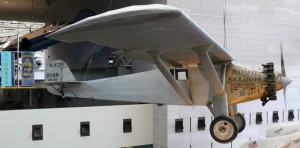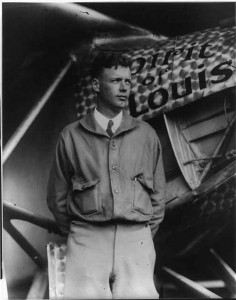Many would not know what the Ryan NYP is if asked about the airplane in that manner. The NYP is one of the most important airplanes ever designed, built, and flown and today, resides in the Air & Space Museum in Washington, DC.
While few know the airplane as the Ryan NYP, almost everyone knows the aircraft by its given name, The Spirit of St. Louis. The airplane, registered as N-X-211, truly is one of the most important airplanes ever to fly.
The story of this amazing aircraft starts when Charles Lindbergh proposed his flight to businessmen in St. Louis. Once approved and financing arranged, the young aviator was off to San Diego to work with members of the Ryan Airlines Company. They would design and build the airplane that would take Lindbergh across the Atlantic and into history.
The Ryan Airlines Company based the design of the airplane on Donald Hall’s previous mail plane, the Ryan M-2. This saved time and money in creating the airplane which would successfully win the $25,000 Orteig Prize for the first crossing of the Atlantic Ocean.
The main difference between the M-2 and the NYP is the size of the wing. The designer and workers at Ryan increased the wingspan of the M-2 some 10 feet in order to create the wing surface area required to lift the aircraft and 2700 pounds of fuel. Combined with the empty weight of the aircraft, gross takeoff weight for the airplane totaled 5135 pounds.
Lindbergh, Hall, and others at the Ryan Company worked tirelessly on the airplane. From the time they made changes to the design of the M-2 until the first flight of the NYP, the process took only 60 days. By the way, the “NYP” designation was short for “New York to Paris.”
The airplane was a marvel of the time. Many considered the NYP as one of the most advanced designs of the 1920s and the airplane would carry 450 gallons of aviation fuel in five separate fuel tanks. This would require Lindbergh to be on his guard in keeping track of which tank he had selected and how much fuel remained in each throughout the flight. The range of the airplane was 4100 miles at a cruising speed of approximately 105 mph. This resulted in an endurance of 39 hours.
Powered by one of the most sophisticated engines of the time, the Wright J-5C “Whirlwind” produced 223 hp. Many considered the engine a mechanical marvel. The engineers designed the motor to run for 9000 hours.
The first flight of the NYP flown from Dutch Flats at San Diego, lasted for only 20 minutes. Lindbergh then flew a second flight of five minutes. Over the next ten days, they would fly the airplane 23 times for a total flight time of four hours and 15 minutes.
On May 10, Lindbergh departed San Diego for New York, with a stop at Lambert Field in St. Louis. On May 12, Lindbergh landed in New York and following a few test flights, he readied the airplane for the flight to Paris. When they departed for Paris, the airplane, still considered brand new, had flown 32 times and only had 27 hours and 25 minutes logged.
They departed Roosevelt Field at 7:52 a.m. on May 20, 1927. After flying for 33.5 hours, they landed at Le Bourget in Paris at 10:22 local time on the 21st.
Lindbergh would fly the airplane over the coming year before turning the historic aircraft over the Smithsonian in Washington one year and one day after the first flight. The Spirit of St. Louis had flown 174 times for 489 hours and 28 minutes.
As she hangs in the Smithsonian’s Air & Space Museum today, she is still a brand new airplane.
-30-
© 2010 J. Clark


